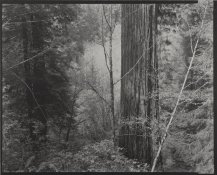Thanks Vaughn for the definitive post on OP's question. Looks like the rest of the thread has gone tangential now....
My pleasure. Once posts have been effectively covered, I like the tangential movement in the posts...especially when dedicated and experienced pros like Bob can add to the conversations.
Edited to add:
I mount prints in the way that I feel best works with the image, print process, the type of paper the image is on, and the way it is to be displayed. This included dry-mounting of my 16x20 silver gelatin prints I use to make. The window in the 24"x28" 4-ply board was cut about one inch larger than the image, and the print (trimmed to the image area) was drymounted within the window -- showing the edge of the print's paper. Nothing 'hidden'. As an artist, this is more important to me than the increase/decrease in its perceived monatary value.
My platinum prints and carbon prints are attached by corners I make from heavy interleaving paper. The windows (8-ply board) for platinum prints are cut to include about 1/8" of the black beyond the film rebate, the carbon prints' windows (8-ply) are cut with a minimum of over-lap of the image area.
The frame choice is equally as important. To me, the entire process, from the first seeing of the potential image to the framing is One. Each step is equally important.












